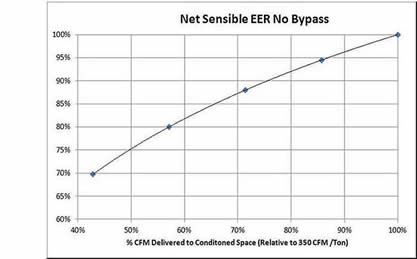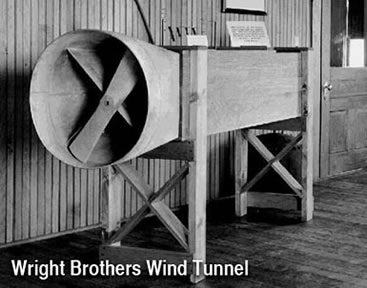| |
In dry climates such as the Southwest United States, if airflow across the outdoor coil is reduced, the ability to reject heat outdoors is reduced. Higher airflow helps, lower airflow hurts. In humid climates, the situation is more complex. At higher airflows, there will be less dehumidification, leading to high indoor humidities. If the airflow gets too low the evaporator coil may freeze. Proper airflow, based on the climate is crucial. The airflow effects the moisture control in the home, personal comfort, health, and has a considerable effect on energy consumption. (See Climate Specific Air Conditioning)
 Purdue University data (Shen, Braun & Groll 2004) from Proctor Engineering Group Zoned AC investigation. Purdue University data (Shen, Braun & Groll 2004) from Proctor Engineering Group Zoned AC investigation.
Given the high incidence of low airflow, even in dry climates and the limited effectiveness of the temperature split method, Proctor began to promote direct measurement of airflow. Many possibilities were investigated including those in Carrier’s “Air Properties and Measurement” SST-03 © 1978 ( a great resource) as well as flow hoods. For residential applications all the investigated methods had various drawbacks – generally, accuracy under the normal residential system designs.
Proctor found a method of testing airflow using a Duct Blaster® or equivalent. This method utilized the fixed airflow vs. resistance curve of the supply ducts to find the normal flow through the system. To this day the “pressure matching” system is considered the most accurate field test method of flow for residential units. The pressure matching method is accurate, but somewhat time consuming (unless you are already set up to measure duct leakage). What was needed was a simple to use flow measuring device with sufficient accuracy for normal diagnostic purposes.
In 2001, The Energy Conservatory introduced the TrueFlow® air handler flow meter. This device has reasonable accuracy and is much quicker to use than the pressure matching method. In 2003 Proctor Engineering introduced the TrueFlow into its CheckMe! Programs. We subsidized the procurement of the TrueFlow meters and paid an additional $10 per tuneup when it was used. The contractors in the program initially showed interest in using the device, but the technicians’ resistance resulted in very few tuneups being done with the device.
Proctor, Wilcox, Chitwood, and others have continued to push direct airflow measurement. As a result, the 2013 California Title 24 will, for the first time, mandate direct airflow measurement for installations.
| |
Practical Application
|
|
| 1. |
I have heard of these new controls that increase efficiency by lowering the airflow through air conditioners. Are they worth it?
No! Reducing the airflow through an air conditioner or heat pump will always reduce its efficiency and increase your heating and cooling costs. The ONLY reason to ever lower the airflow on an air conditioner is to remove more humidity from a house with high humidity. Lowering the airflow with an existing PSC motor is a simple change from one wire to another. No fancy-pants device needed. |
|
2.
3.
|
What are the most common factors causing low airflow?
Low Blower Motor Speed
Bad (common) Duct Design
Oversized ACs
So how can I improve airflow without spending a ton of money?
If you have a single air return system on your air conditioner or heat pump, add another return and upsize the whole return system. |
|

|
|
|
|

 Purdue University data (Shen, Braun & Groll 2004) from Proctor Engineering Group Zoned AC investigation.
Purdue University data (Shen, Braun & Groll 2004) from Proctor Engineering Group Zoned AC investigation.

